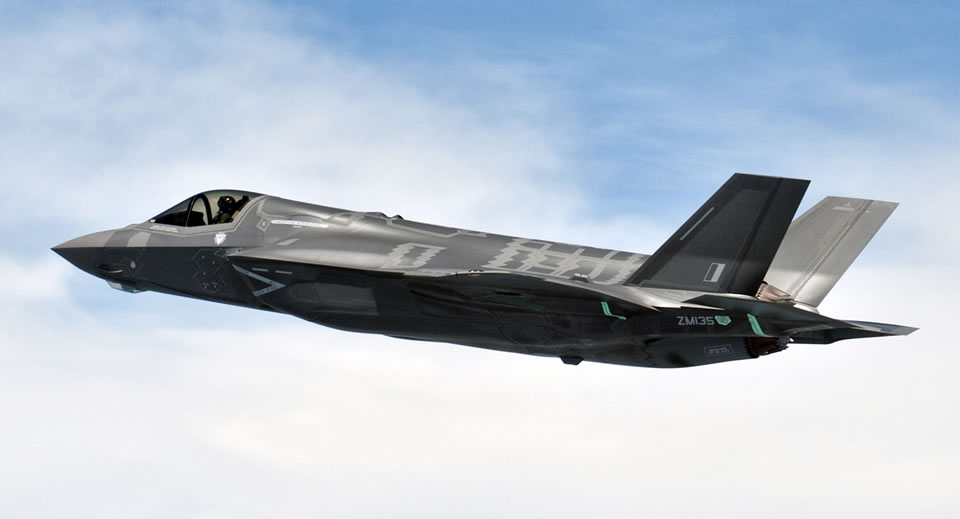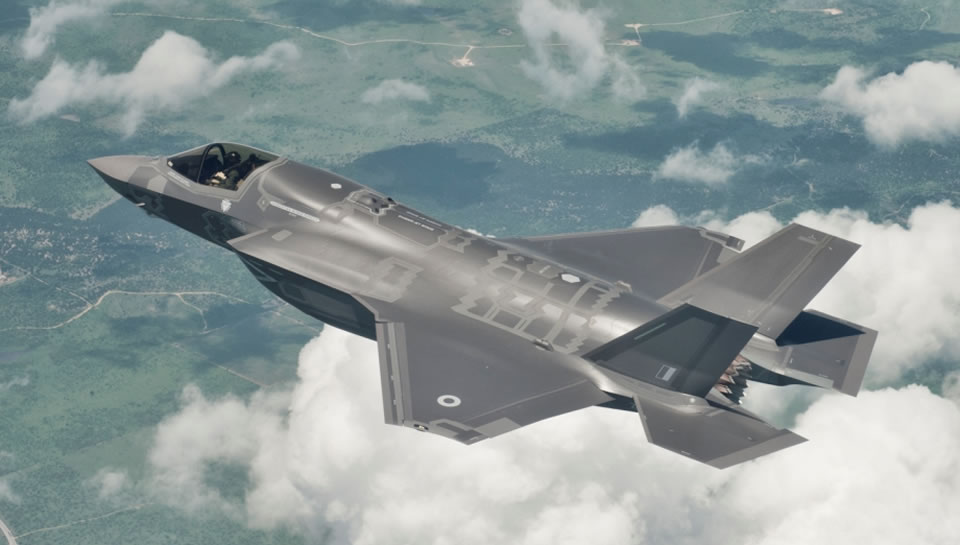In a much awaited announcement, the United Kingdom has decided to reverse its previous selection and will now focus its efforts on acquiring the Lockheed Martin F-35B Short Take-Off and Vertical Landing (STOVL) aircraft instead of the conventional F-35C naval model of the Joint Strike Fighter (JSF).
In an address to Parliament on 10 May, Defense Secretary Philip Hammond confirmed that the government had decided to dump plans to purchase the F-35C naval model in recognition of unanticipated cost increases and delays in converting the Royal Navy’s Queen Elizabeth-class aircraft carriers to accommodate the F-35C conventional aircraft. Secretary Hammond said that the cost of converting only a single aircraft carrier had escalated to an amount at least double the original estimate of $1.6 billion; an amount he said would adversely impact other national defense capabilities.
The ousted Labour Party originally selected the F-35B STOVL for deployment aboard the Royal Navy’s new 65,000 ton aircraft carriers then under construction, a decision that was dropped in favor of the conventional F-35C fighter by the Conservative Party’s coalition government in their Strategic Defense and Security Review (SDSR) published in September of 2010. The government’s 2010 SDSR cited the lower cost of the F-35C as grounds for the change as well as the longer range and enhanced performance of the F-35C variant.

The British government is now attempting to downplay the enhanced capabilities of the F-35C when compared to the B variant. One senior source within the Defense Ministry stated that a return to the F-35B STOVL will not have any significant effect on the Royal Navy’s air operations. This source said that the weapon’s payloads originally planned for the F-35 would not change considering the missions to be flown and the longer range of the C variant was of little importance since inflight refueling would overcome any differences in range between the B and C models.
With a return to the F-35B STOVL variant, the Ministry of Defense can now discontinue the costly modifications being performed on the Royal Navy’s two Queen Elizabeth-class carriers, modifications that would be needed to accommodate the F-35C. To operate a conventional fighter, the carriers required installation of catapults and arresting gear, the so-called “cats and traps.”
Design modifications needed to convert the Queen Elizabeth-class carriers to handle the conventional F-35C proved to be more complex and invasive than expected requiring changes in 250 compartments instead of the originally planned 80 compartments. Installation of the General Atomics manufactured Electromagnetic Aircraft Launch System (EMALS) and arresting gear. These modifications, Secretary Hammond noted, would delay the operational deployment of the carrier strike force until 2023, an unacceptable delay of at least three years beyond initial plans.
Part of the cost escalation, according to an unnamed defense source, is the result of American government insistence that the General Atomics-built EMALS be procured through the US Foreign Military Sales (FMS) program instead of directly from the manufacturer. The source claims this requirement added as much as seven percent to the modification costs.
Carrier modifications have already cost between $65 million and $81 million with additional exit costs to US contractors anticipated and still being negotiated. Additional funds would be required to install takeoff ramps on the two carriers. The UK has already spent nearly $3 billion on the F-35 program in development costs and production fees.
In a statement, the Ministry of Defense confirmed it was still committed to interoperability with US and French naval forces, but emphasized that the Royal Navy’s renewed focus will “now be much less on being able to fly our aircraft off US or French aircraft carriers and vice versa, but more on ensuring that our carrier strike capability can integrate with allied forces in joint or coalition operations.” The Ministry further stated that the critical issue with the French was ensuring the two nations could have at least one aircraft carrier operational at all times to provide “cover for each other during refit periods.”
In the 2010 SDSR plan, the sitting government at the time admitted that, in selecting the conventional F-35C variant, the Royal Navy would be unable to maintain a continuous air arm at sea and only one of the new aircraft carriers would be modified with catapults and arresting gear while the second vessel would either be mothballed or be sold. Since the Royal Navy and the Royal Air Force would be operating the F-35 jointly, an aircraft carrier could be deployed on a much reduced schedule.
Implied in the decision to revert to the F-35B, the government appears to be entertaining the prospect of commissioning and operating both carriers allowing the Royal Navy to maintain a continuous sea presence with one ship at sea while the other is undergoing refit or maintenance. Publicly, the Ministry of Defense admits that no money has been budgeted to fund a crew or support requirements for a second carrier and no decision would be forthcoming until the 2015 Strategic Defense and Security Review is released. Secretary Hammond also stated that the number of F-35Bs the UK will procure will not be decided until the 2015 SDSR is completed.
Under the 2010 plan, the first carrier, the Queen Elizabeth, would have been laid up or sold off once completed with the second carrier, the Prince of Wales, to begin operations sometime in 2020 after being equipped with catapults and arresting gear to fit the F-35C. The new plan calls for the Queen Elizabeth to begin sea trials sometime in 2017 with the initial carrier-deck test flights of the F-35Bs scheduled for 2018 and operational deployment in 2020. The Prince of Wales is likely to follow shortly after this.
Hammond told members of Parliament that both carriers would be completed with a “STOVL configuration – giving us the ability to provide continuous carrier availability throughout the life of the ships.”
Rolls-Royse, manufacturer of the LiftSystem propulsion system integrated with the Pratt & Whitney F-135 engine to power the F-35B, and BAE Systems, the fabricator of the B variant’s aft fuselage, will both benefit from this decision.
The decision to revert to the B variant also continues the UK’s storied history using STOVL aircraft. This history looked to come to an end with the UK’s early retirement of its fleet of Harrier GR7/9s.
Lockheed Martin is scheduled to deliver the first of three UK aircraft for test and evaluation during a special ceremony at Eglin Air Force Base, Florida following the Farnborough Air Show. A second F-35B model is scheduled for flight testing soon with a third model to follow sometime in 2014.

















